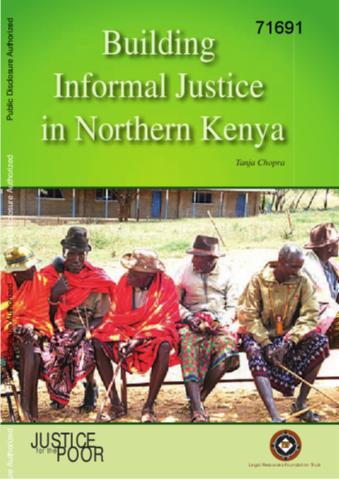The World Bank is a vital source of financial and technical assistance to developing countries around the world. We are not a bank in the ordinary sense but a unique partnership to reduce poverty and support development. The World Bank Group has two ambitious goals: End extreme poverty within a generation and boost shared prosperity.
- To end extreme poverty, the Bank's goal is to decrease the percentage of people living on less than $1.25 a day to no more than 3% by 2030.
- To promote shared prosperity, the goal is to promote income growth of the bottom 40% of the population in each country.
The World Bank Group comprises five institutions managed by their member countries.
The World Bank Group and Land: Working to protect the rights of existing land users and to help secure benefits for smallholder farmers
The World Bank (IBRD and IDA) interacts primarily with governments to increase agricultural productivity, strengthen land tenure policies and improve land governance. More than 90% of the World Bank’s agriculture portfolio focuses on the productivity and access to markets by small holder farmers. Ten percent of our projects focus on the governance of land tenure.
Similarly, investments by the International Finance Corporation (IFC), the World Bank Group’s private sector arm, including those in larger scale enterprises, overwhelmingly support smallholder farmers through improved access to finance, inputs and markets, and as direct suppliers. IFC invests in environmentally and socially sustainable private enterprises in all parts of the value chain (inputs such as irrigation and fertilizers, primary production, processing, transport and storage, traders, and risk management facilities including weather/crop insurance, warehouse financing, etc
For more information, visit the World Bank Group and land and food security (https://www.worldbank.org/en/topic/agriculture/brief/land-and-food-security1
Resources
Displaying 4761 - 4765 of 4907Policy and Institutional Dynamics of Sustained Development in Botswana
Botswana represents one of the few development success stories in Sub-Saharan Africa. Real Gross Domestic Product (GDP) growth averaged almost 9 percent between 1960 and 2005, far above the Sub-Saharan Africa average. Real GDP per capita grew even faster, averaging more than 10 percent a year -- the most rapid economic growth of any country in the world. The crucial question is: Why has Botswana grown the way it has done, and what lessons does it offer?
Battles Half Won
Rapid growth since 1980 has transformed India from the world's 50th ranked economy in nominal U.S. dollars to the 10th largest in 2005. The growth of per capita income has helped reduce poverty. At the same time, evidence suggests that income inequality is rising and that the gap in average per capita income between the rich and poor states is growing. This paper reviews India's long term growth experience with a view to understanding the determinants of growth and the underlying political economy.
Building Informal Justice in Northern Kenya
This report analyzes the conflict resolution mechanisms among pastoralist societies in northern Kenya who have a long history of conflict but were by and large not involved in recent hostilities. It is based on qualitative research data that was collected during field visits between July and November 2007 in three arid lands districts in Northern Kenya - Isiolo, Baringo/East Pokot and Garissa. Research areas were selected to gain insight into conflict and legal dynamics among a variety of ethnic groups and in differing ecological and political environments.
Building Informal Justice in Northern Kenya
This report analyzes the conflict resolution mechanisms among pastoralist societies in northern Kenya who have a long history of conflict but were by and large not involved in recent hostilities. It is based on qualitative research data that was collected during field visits between July and November 2007 in three arid lands districts in Northern Kenya - Isiolo, Baringo/East Pokot and Garissa. Research areas were selected to gain insight into conflict and legal dynamics among a variety of ethnic groups and in differing ecological and political environments.
Poverty Assessment for Bangladesh
Bangladesh has made good progress in reducing poverty over the past decade despite the series of external shocks which have routinely affected the country. Poverty fell from 49 percent in 2000 to 40 percent in 2005, propelled by respectable economic growth and relatively stable inequality. These statistics are reflected in tangible improvements in poor people's lives, such as a sharp reduction in those living under flimsy straw roofs in rural areas.









